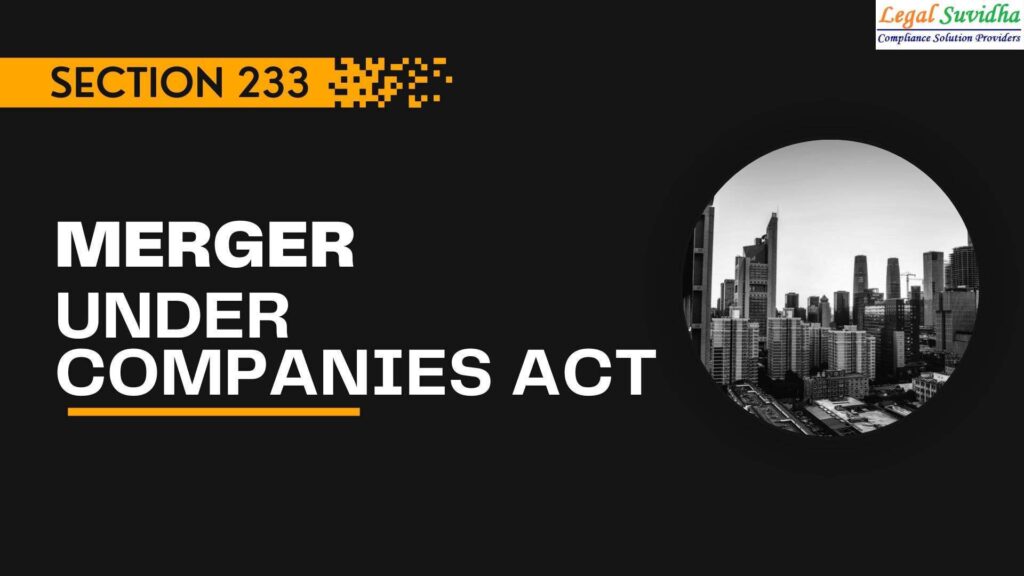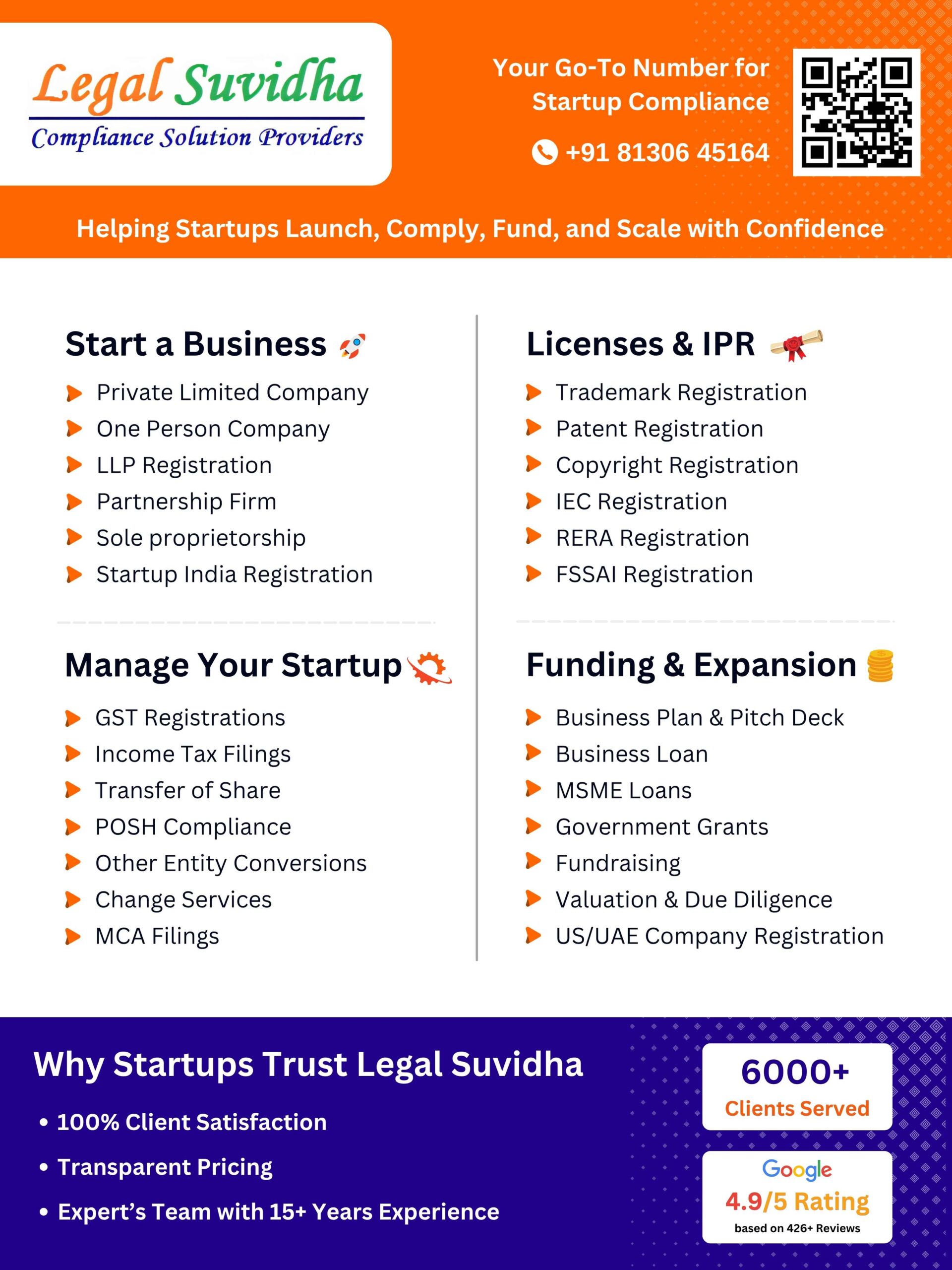SECTION 233: FAST TRACK MERGER UNDER COMPANIES ACT,2013
Section 233 of the Companies Act, 2013 introduces the globally accepted concept of the Fast Track Merger Process which introduces a slightly simpler procedure for mergers and amalgamations of certain classes of companies including small companies, holding and subsidiary companies. This process, enables these companies to undergo merger and amalgamation procedures quickly, simply, and within a fixed time duration. The Companies Act, 2013 clearly notifies that it applies to all kinds of compromises and arrangements that involve these companies
The term merger has not been defined under the Companies Act, 2013 (“CA, 2013”) but in commercial terms, a merger is a combination of two or more existing companies which merge their identities to form a different entity which can either be one of the existing companies or may not be the existing company but may form a separate new entity altogether.
PURPOSE:
With the objective of promoting the ease of doing business in India, the concept of fast-track merger was introduced under the Companies Act, of 2013. Section 233 of the Act and Rule 25 of the Companies (Compromises, Arrangements, and Amalgamations) Rules, 2016 offer certain classes of companies an alternative option of a merger, with fewer legal requirements and a quicker approval and registration process.
The merger process set out in the Act, unlike that in the former Companies Act, of 1956, is simpler and swifter. The fast-track merger mechanism offers a cost-effective solution, with no intervention of the National Company Law Tribunal (NCLT); no requirement for a special audit; and no administrative formalities. Furthermore, the process does not require any newspaper advertisement or public advertisement announcing the merger
WHAT IS THE FAST-TRACK MERGER PROCESS?
Section 233 of the Companies Act, 2013 introduces the globally accepted concept of Fast Track Merger Process which introduces a slightly simpler procedure for mergers and amalgamations of certain classes of companies including small companies, holdings, and subsidiary companies. This process enables these companies to undergo merger and amalgamation procedures quickly, simply, and within a fixed time duration.
The Companies Act, 2013 clearly notifies that it applies to all kinds of compromises and arrangements that involve these companies.
THE SCHEME OF THE MERGER SHOULD HAVE THE FOLLOWING DETAILS
- Name of the Parties, companies involved, Appointed Date, and Effective Date.
- Share Exchange Ratio, if applicable and other considerations, if any.
- Details of promoters, Directors, and KMPs.
- Valuation Report received from the Registered Valuer -a summary should be mentioned.
- Details of Capital or Debt restructuring, if any.
- Amount due to the unsecured creditors.
- Rational and benefit derived from the merger and also as perceived by the Board, Members, and creditors. Investigation or proceedings pending, if any against the company.
- Disclosure of the effect of the merger on various KMPs and other Directors/Promoters, if applicable. Accounting treatment clause as per Accounting Standard 14.
- Clause relating to conduct of business by the Transferor Company as a Trustee for and on behalf of the Transferee. Treatment of employees and workers and other contract workers.
- Authorized Capital and consolidation of the same upon completion of the merger.
- Effect of Tax and its consequences. Date of Board Meetings, Meeting of Member and creditors for approval and its validity.
- Dissolution of Transferor Company clause.
- A clause stating that the Scheme is conditional and will be effective only after approval.
- Provisions for modification.
- Effect of non-receipt of approval of the Scheme.
- Documents to be listed for Inspection.
- Cost of Merger.
- Any other matter to be considered for a merger.
The draft scheme requires the approval of
- the Board of Directors of both companies.
- 90% of shareholders (in number) and 90% of creditors (in value).
- Central Government (power delegated to Regional Director)
The following are the mandatory requirements for the facilitation of the fast-track merger process
The scheme must be filed with the Jurisdictional Registrar of Companies (ROC) as well as the official liquidator. Convening a meeting of members and creditors to obtain approval. The creditors meeting can be avoided if they readily provide their consent in writing. The filing of a declaration of solvency by both the involving companies.
CLASSES OF COMPANIES COVERED UNDER THE FAST-TRACK MERGER ROUTE (APPLICABILITY AND ELIGIBILITY)
A scheme of merger or amalgamation under section 233 of the Act may be entered into between any of the following class of companies, namely:—
- Two or more start-up companies; or
- One or more start-up companies with one or more Small Companies;
- The merger between two or more Small Companies;
- Merger between a Holding Company and its Wholly-owned Subsidiary Company.
PROCEDURE:
BOARD MEETING
The board meeting is to be convened both by the transferor and transferee company to decide and approve the following:
- To approve the Scheme of Merger and authorize a Director/Company Secretary to make an application to the Regional Director.
- To fix, the time, date, and place of the meeting of the shareholders.
- To appoint a valuer for taking certificate for the Fair value of share under section 247 of the Act.
- To approve the latest financial statement, auditor’s report, and supplementary financial statements in case the last financial statement is more than 6 months before the date of the Board Meeting.
- Certificate from Statutory Auditor that the accounting treatment for the proposed Scheme is as per the Accounting Standards.
- To approve the Declaration of Solvency by the Directors.
- Noting of a list of creditors and value of total liabilities towards creditors. Also, to fix the time, day, and place of the meeting of the creditors.








